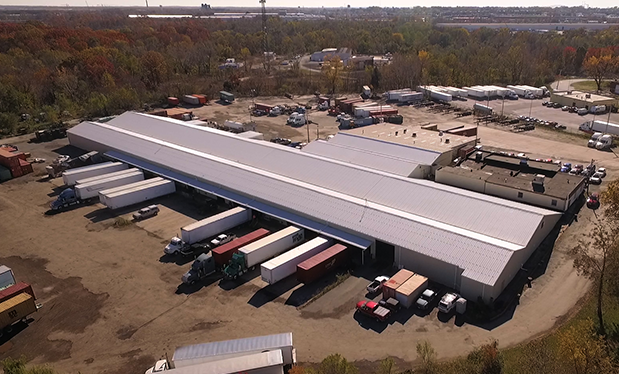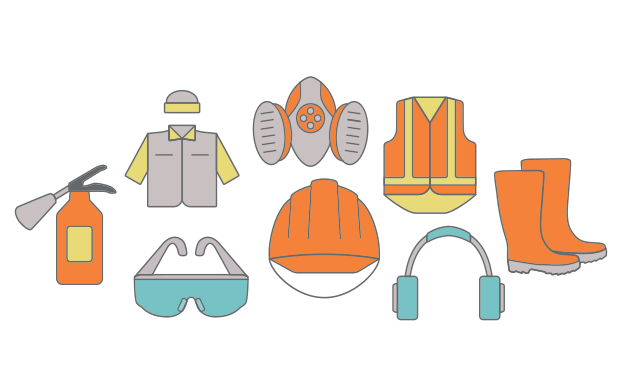Roofing is demanding work requiring a great deal of skill and attention to detail. It's also dangerous work requiring vigilance at all times. Even the best roofing contractors can become complacent when it comes to safety because when you spend countless hours on top of buildings, working at significant heights can start to seem as natural as working on the ground.
But roofing contractors should never allow complacency to enter a job site. As a roofing contractor, you have the power and responsibility to control many of the variables that can prevent tragedy for employees. No one wants to make an unpleasant phone call to a crew member's family following an accident, especially if the accident could have been prevented—and most accidents can be prevented with the appropriate preparation, awareness, training and equipment.
Essential Guidelines
Every roofing contractor should be aware of and adhere to the following five essential guidelines.
No. 1: Do your homework and have a plan
Before visiting a potential job site, gather as much information as you can. View the building and the surrounding area with a satellite-imaging program or browser, such as Google Earth, to get a sense of potential safety issues and determine your initial setup areas. Meet with the building owner or property manager to learn whether any circumstances exist that might influence your safety plan. This conversation serves as the beginning of your job-hazard analysis, a critical component of a safe and successful project.
When it comes to roof safety, a one-size-fits-all approach doesn't work. Different buildings require different safety measures, and those measures often evolve as a job progresses and conditions change. Just as you would tailor your approach to a roof system installation for a building, tailor your safety plan for each job individually.
Gather the information you'll need to plan for the crew's safety and all those around the building. Find out as much as you can about the area where your crew will be working. No two roofing jobs are the same even if buildings were constructed using the same blueprints. How a building is used plays an enormous role in its condition over time: A school will wear differently than a chemical plant or a fire station or an office building. Learn as much as possible about the current building's condition and pay attention to the smallest details.
Meet with the building owner or property manager regarding how to approach the project in the safest manner possible. Does the building house hazardous chemicals or produce vapors that might affect crew members? You might schedule work when the risk of hazardous chemicals or vapors are at a minimum.
Once you've met with the building owner or manager, take a close look at the roof. Are there skylights or areas with particularly bad damage or a weak roof deck? Examine the roof's surface as well as the area from underneath. Is there evidence of existing leaks? Is there anything under the roof that might pose a challenge? Is there any mechanical equipment attached to the roof deck? Might anything inside the building be affected by work on top of the roof? Once identified, be certain to cover skylights or install guardrails around them. Severely damaged areas or decking may need special treatment for building occupant and roofing worker protection. This may include plywood covers, barricades and interior netting or other protective measures.
My company, Ridgeworth Roofing Co. Inc., Frankfort, Ill., once worked on a building on which a sprinkler system had inexplicably been fastened to the roof deck's bottom. The sprinklers were triggered by activity on the roof—certainly not an effect the building occupants were hoping to experience. We learned from that mishap and now check for similar complications on every job.
If possible, get another set of eyes on the project. It's helpful to bring a foreman to the job site as part of your preparation. Better yet, visit the job site together on a questionable weather day to get a good sense of the challenges different weather conditions might present. Review everything you've noticed and see whether the foreman notices anything else or has different ideas about how to run the project safely. The foreman's experience reviewing the day-to-day operation of each project means he or she likely will have valuable insights about how to maintain a safe work environment—tap into that expertise.
No. 2: Know the standards of safety and work to exceed them
The Occupational Safety and Health Administration (OSHA) requires employers to identify and address all the hazards a roofing job site might present, including possible causes of physical injury, exposure to hazardous substances, environmental conditions that may cause bodily harm and falls.
The leading cause of death in construction is falls. According to OSHA, 3,500 construction industry employees died from falls between 2003 and 2013, and falls from roofs accounted for 34 percent of those fatalities. When it comes to fall protection, vigilance is essential.
Determine early in your planning how your crew will access the roof safely. One project might allow for access via a building's interior; another might require using a ladder. A larger, more long-term project might necessitate installing a stair tower on the scaffolding. Whatever you decide, follow the safety guidelines for that approach.
OSHA requires fall-protection equipment at heights of 6 feet or greater, and a contractor always should follow the appropriate standard for the roof system slope.
For example, a warning-line system and safety monitor only may be used on low-slope roofs (4:12 or less). The fall-protection method you choose depends on each particular job. Make these decisions before you begin work and adjust as needed. Some projects will require a guardrail system; others only will need perimeter warning lines.
Will crew members be working near the roof's edge? If so, a personal fall-arrest system, which includes an anchor, harness, and lifeline or lanyard, can help keep workers safe near unprotected sides and edges. As an additional layer of protection, a safety monitor can watch over those working close to the edge.
Be sure your crew members know how to set up and use all safety equipment effectively. Review procedures regularly and conduct frequent training to keep those procedures fresh in your workers' minds.
My company employs a safety consultant to conduct training and mock OSHA safety inspections beyond those provided by the local union, Roofers and Waterproofers Local 11. Our employees never know when an inspection might take place, so the consultant gets a true sense of the nature of our job sites. The consultant also reviews all previous safety inspections each year and identifies any recurring safety issues that may exist. Then, we work with any crew member having trouble adhering to safety standards.
Holding crew members accountable for their actions on a job site helps keep them aware and, more importantly, alive. Taking safety one step further, if we have a job for which we're concerned about the setup, our consultant conducts the hazard analysis with us. This way, we know we've addressed all areas.
Remind your crew constantly about adhering to safety standards. And just as you expect every crew member to abide by the safety standards, you should, as well. Demonstrate leadership in all things, especially safety. It could save a life.
No. 3: Consider those beneath roof level
You have a plan for your crew and anyone else who might set foot on the roof, but what about the people on the ground and inside the building? Will you need to flag an entry path for residents and visitors? Do the facility's daily operations require consideration as to when and how roofing work will be completed? If the building or surrounding area is in use, its occupants and those in the vicinity always must be considered in your plan. Keep them just as safe as the crew on the roof.
Falling debris always is a concern, as well as anything else that might blow off the roof or scaffolding during or after work hours. My company tasks an apprentice with gathering and immediately securing any loose debris on a job site. When it's an assigned responsibility, it's more likely to get prioritized. Ensure no debris remains at the end of the workday that will blow around or off the roof overnight. And make sure all equipment always is properly secured because one never knows what could become loose and fall from the roof, especially if winds pick up. Don't take any chances.
Also, consider whether you'll need to provide interior protection for the building. Once, our company removed a roof system on an active dialysis center with no drop ceiling. For the safety of the patients inside, absolutely no dust could enter the building. We hired an interior-protection company to help us maintain the health and safety of the building's occupants. They worked during the night when the center was closed, and we worked on the roof during the day.
Throughout the course of the project, all the dirt and dust was contained. The building owner didn't receive a single complaint, and we completed a successful project. In this case, seeking the help of other experts enabled us to provide the best protection for those inside the building and focus on what we're good at—roofing.
No. 4: Invest in your employees
Your crew is your greatest asset. Keep them safe by teaching them how to be safe. Train them well and often.
OSHA requires employers provide fall-protection training for all employees who may be exposed to fall hazards. The training should be presented in a language and manner employees can understand. Employees should know how to recognize fall hazards and minimize or eliminate them with appropriate procedures. They should learn how to inspect, maintain, and put together and take apart fall-protection equipment.
Ridgeworth Roofing always is looking for opportunities to help our crews improve not only their technical skills but also their safety awareness. Our employees are thoroughly trained in OSHA fall protection. They have completed OSHA crane signaling and rigging training. They know how to test and inspect equipment and how to properly use their personal protective equipment. If a manufacturer we buy from or the union offers training, we send our employees for instruction. We purchase six full-day training sessions from our safety consultant each year. There's no such thing as too much training; it's well worth the additional expense.
Find out what's available in your area and take advantage of training opportunities. NRCA, for example, offers a Roofing Industry Fall Protection from A to Z class. The all-day course provides updates regarding fall-protection systems, as well as OSHA requirements for your state. It also includes hands-on demonstrations of equipment and reviews safety and rescue techniques.
Retrain employees as needed over time, especially when work conditions, fall-protection systems or equipment change. Provide additional training for employees who seem to struggle with maintaining safety standards.
An OSHA inspector always will ask about your crew's training, so you should document all training provided. However, not every company provides its employees with even the bare minimum of training, seeing it as an additional expense and unnecessary use of time. I view extensive training as an investment in my employees—they are what makes my company great, and on the roof, they are my responsibility. Hiring a safety consultant for additional inspections isn't an OSHA requirement, but we conduct more than 50 mock inspections each year. To us, it just makes sense. Our crews are worth it.
Unfortunately, no matter how much training you provide, accidents still can happen. If someone using a personal fall-arrest system falls, have a plan for how to come to his or her aid. If an injury or emergency occurs, make sure your crew members can provide first aid. Ridgeworth Roofing provides advanced first aid training, as well as AED (automated external defibrillator) training. We want our crews to be ready for any situation.
We constantly remind our crew members about where they are working. They are not standing on the ground. We want them to make it home to their families each night, so the more they know about how to stay safe at heights, the better.
No. 5: Set up frequent safety checks
Check to be sure all safety guidelines are being followed and then check again. And again. When it comes to safety, zero tolerance is not unreasonable. It is essential.
Communication is key. Every day, before a crew begins work, the foreman calls everyone together for what we call a "safety huddle." Although it might sound a bit goofy, the safety huddle is extremely serious—an essential part of our work day. Before the huddle, the foreman conducts a pre-job hazard analysis and determines the plan for the day. He shares it with the team. Together, they discuss what to expect, where to be especially careful and where to have another person watching them.
We encourage our crew members to speak up if they notice something that could be handled differently or more safely. We listen to every team member every day. The safety measures for a job will evolve as the job progresses, and the people working on the roof daily should know better than anyone else what needs to be done.
Check safety equipment each day to ensure it is ready to protect your crew members. If equipment must be repaired or replaced, do so immediately.
Visit your crews regularly. Unannounced safety checks provide an authentic view of what's happening on a job site and are far more effective than the safety checks a crew learns about in advance. Our safety consultant conducts safety checks—we provide our schedule each week, and he decides when to show up. He reviews the results with us so we're aware of what's going on, and we always follow up with our crew. If a problem is identified, we work together to figure out how to solve it. If an employee isn't able to maintain safe work habits, we remove him or her from the crew. No one is permitted to take chances with his or her life or the lives of others when working for our company. The buy-in of all employees is a critical piece in our safety plan. My company's disciplinary process has three steps.
With the first offense, the employee must review our company's safety manual, paying special attention to the section that calls out why he or she has been cited with a violation. Then, there is a discussion with management to review and make sure the employee understands the importance of on-the-job safety.
With the second offense, the employee receives unpaid time off, and this depends on the severity of the violation. The employee also must be retrained to understand the safety violation standard within 30 days. The third offense results in employee termination.
Complacency has no place
Roofing is an incredibly rewarding job. Roofing professionals provide protection to building occupants through the construction, repair and/or maintenance of roof systems. We keep people, merchandise and equipment safe from the elements and comfortable in all conditions. Roofing contractors also must protect the men and women who work hard to provide that protection to our customers.
The hazards roofing contractors face are many: heights, ladders, tools, electricity, existing mechanicals, hazardous substances, weather conditions and more. It is the roofing contractor's responsibility to identify and address hazards and ensure employees can do the same through training, proper equipment and constant reminders. It's the least we can do for our employees and our customers—our two most valuable assets.
Complacency has no place on a roof. Before every roofing job, take the proper steps to prevent it.
Rod Petrick is owner and president of Ridgeworth Roofing Co. Inc., Frankfort, Ill.
For an article related to this topic, see "Safety: A core value," July 2015 issue.



